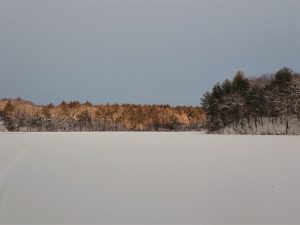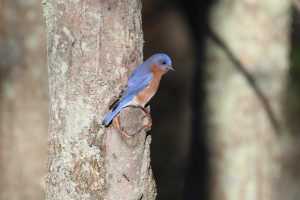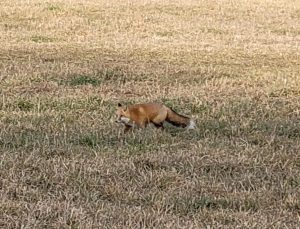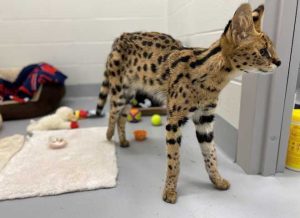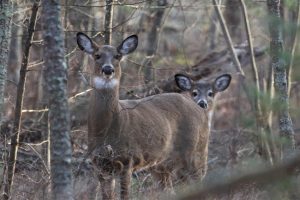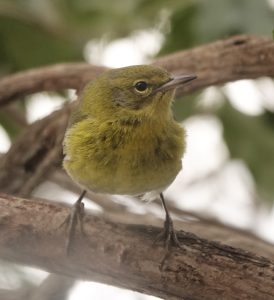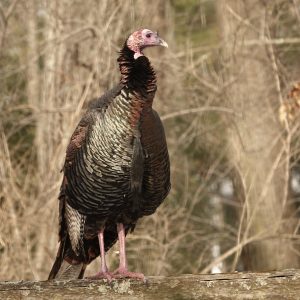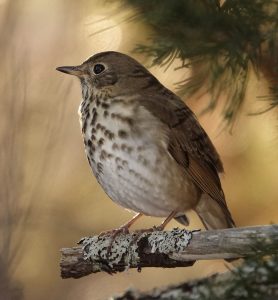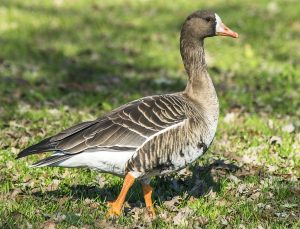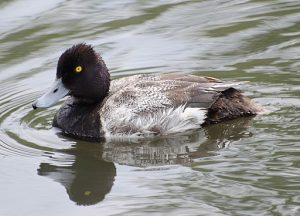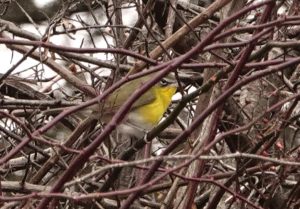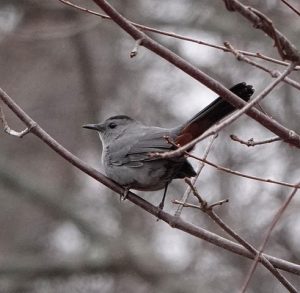Written by Gwyn Loud for the Lincoln Land Conservation Trust. She welcomes your sightings and questions at 781-259-8690 or gwynloud555@gmail.com.
The past month has seen wide swings in temperature, going from 61℉ on Dec. 16 to nighttime single digits the week of January 10. In between we had quite mild weather over Christmas and New Year’s, followed by our first real snow of the season on January 7. Now the landscape is white, but already there are hints of spring as the sun gets higher in the sky each day and sets a bit later. A few birds, prompted by day length, not temperature, are already rehearsing spring songs. House finches, for example, are twittering a lot, nuthatches are honking, woodpeckers drumming, and any day I expect to hear the fee-bee call of the black-capped chickadee. Bluebirds are exploring nest boxes as if making note of the real estate options. Snow drops have been blooming in a protected spot by my house for several weeks. Trees are resting, but in only a month sap will start to rise and we shall see buckets hanging on sugar maples.
A recent LLCT virtual program by Smith College Professor Dr. James Lowenthal focused on the damage light pollution does to both wildlife and humans. Please consider turning off your outdoor lights after dark. Watch the recording here!
The most unusual mammal sighting of the past month was, without question, a serval, which is a wild cat native to sub-Saharan Africa and illegal to own in Massachusetts except for zoos with the proper permit. The serval turned up in a backyard along Partridge Lane, not far from Rt. 2 on January 5. Fortunately, the homeowners contacted the MSPCA, who were able to rescue the animal just two days before a snowstorm and bitter temperatures arrived. The serval will be transferred to the Wildcat Sanctuary in Minnesota, where fifteen servals already reside.
As for local mammals, most are active throughout the winter; snow offers a chance to read stories left by tracks. The snow also reveals tunnels made by shrews and voles in the subnivian layer, where the ground and snow meet. Many people have reported healthy red foxes, and I have four fat red squirrels and six fat gray squirrels eating regularly under my “bird” feeders. White-tailed deer eat their usual plant diet of twigs, stems, and grasses, and perhaps your rhododendrons. They also grow thicker fur in the winter, consisting of an outer layer of guard hairs and a more insulated undercoat. Read more about deer surviving winter here.
Those who feed birds have been observing erratic activity, some people lamenting that they have very few birds. At other feeders, including mine, a mixed flock of “the usuals” is very busy feeding and then suddenly they are all gone for an hour or two, sometimes because a hungry Cooper’s hawk swoops through. A resident on Laurel Drive is having regular visits to a suet cake from a pine warbler as well as a hungry “peeping tom” (wild turkey, that is). On the recent bitterly cold days my heated birdbath was a big attraction; birds need water in any weather. This time of winter is when I always marvel at how birds can survive nights of frigid cold. Luckily, they have strategies. If they look puffed up in the cold it is because they are raising the down feathers next to their skin to trap in more heat. Birds have a higher body temperature than ours, about 105℉ and to maintain this temperature they have to eat almost constantly during a cold winter day, finding seeds, berries, and insect eggs, pupae or even frozen caterpillars beneath bark. At night the birds automatically lower their body temperatures, and often shiver, huddle in a group, or seek shelter in protected spots. I see single birds dart into birdhouses at dusk. Read more more about birds surviving winter here.
Norman Levey writes as follows about the Christmas Bird Count, which occurs annually in a two-week window around Christmas and is overseen by the National Audubon Society. Lincoln is part of the Concord Count, one of over 2500 count circles in the Americas and the Pacific Islands. “The Lincoln winter bird counters started out early on a mild snowless and showery January 2nd that was a masquerade of a dour November day. Many ducks and songbirds we expected to book passage south a month ago were still present; lingering catbirds, towhees, phoebe and fox sparrows surely evince the stubborn persistence of Fall in January and a changing climate. The Concord count of 2009 with almost two feet of snow and ten thousand juncos seems a distant recollection of a time when we had real New England winters.
The hours before dawn found the owls quieter than in recent years. A lone hooded merganser in Lincoln called feebly from a roost in a wet woodland, likely enclosed in the hollow of a decaying branch or fallen tree. The strange “harnk” of a female great horned owl startled one listener along the Baker Bridge crop fields, her mate calling not far away. Great horned owls numbered fewer than half last year’s total and the Northern saw-whet owls were absent. A barred owl near Codman Road uttered a single howl. Owls always prove unpredictable. Click here to listen to Great Horned Owl calls recorded by Norman Levey.
A big surprise during the count week was a GREATER WHITE-FRONTED GOOSE, possibly a new species for Lincoln, seen in flight over the Baker Bridge crop fields with a flock of Canada geese headed toward Nine Acre Corner in Concord, where it was counted again with a second greater white-fronted goose foraging on the farm fields. Both celebrity geese had been seen by many birders and photographers the previous two months. The greater white-fronts are circumpolar and have the broadest geographical range of the Old World gray geese that are occasional visitors in New England and include graylag, snow, and pink-footed.
Flint’s Pond, usually capped by ice by early December, was open and welcoming to cold water ducks including 45 common mergansers, two bufflehead, 14 common goldeneyes, 12 hooded mergansers, and a single mallard. A remarkable sighting was a raft of four likely LESSER SCAUP with the common goldeneyes, with only a few previous occurrences on the pond.
Surely our most abundant bird this year was the European starling with a total of 773, most foraging in the Codman Farm barnyard and congregating in the treetops surrounding the community garden, forming a strident and raucous choir. These birds are descendants of the first approximately 100 individuals released in Central Park, New York in 1890 in a project to import all the birds mentioned in the works of Shakespeare. There are now more than 200 million starlings distributed across most of the continent.
A YELLOW-BREASTED CHAT that had been visiting the thicket edges of Valley Pond for almost three weeks put a Lincoln field team on a count day chat chase, to no avail, but it showed up the next morning in its home base thicket to collect a count week trophy. This bird, once classified a warbler, is a single occupant of its own taxonomic family, very close to the blackbirds. A gray catbird followed the same playbook as the chat, reliably present during the six day count week but elusive on the count.
Fair weather-flying red-tailed hawks were half last year’s total and the comparative paucity of nomadic blue jays may be attributed to scarcity of mast (acorns). Wild turkeys have adapted quite well and may be visiting a feeder near you.
Many thanks and praise to all our participants who went afield in soggy conditions and counted birds in their yards and made this 62nd Lincoln winter bird count a success.”
The participants in this year’s Count, either in the field or watching feeders were Pyrra Alnot, Pam Boardman, Patti Cable, Marjorie Durand, Mark Elliott, Jason Forbes, Deborah Gerstein, Nancy Hammond, Jane Layton, Norman Levey (who also coordinated the whole Concord Circle), Gwyn Loud, Lucia MacMahon, Ron McAdow, Thomas Michel, Maya Mozyak, Barbara Peskin, David Peterson, Bernadette Quirk, Anne Sobol, Pam Sowizwral, Peter Sperber, Lucy Sprayregen, Greg Stathis, Betsy Stokey, Flavio Sutti, Rob Todd, and Robin Wilkerson. Please join us January 1, 2023 for another fun adventure in winter birding!
© Gwyn Loud


